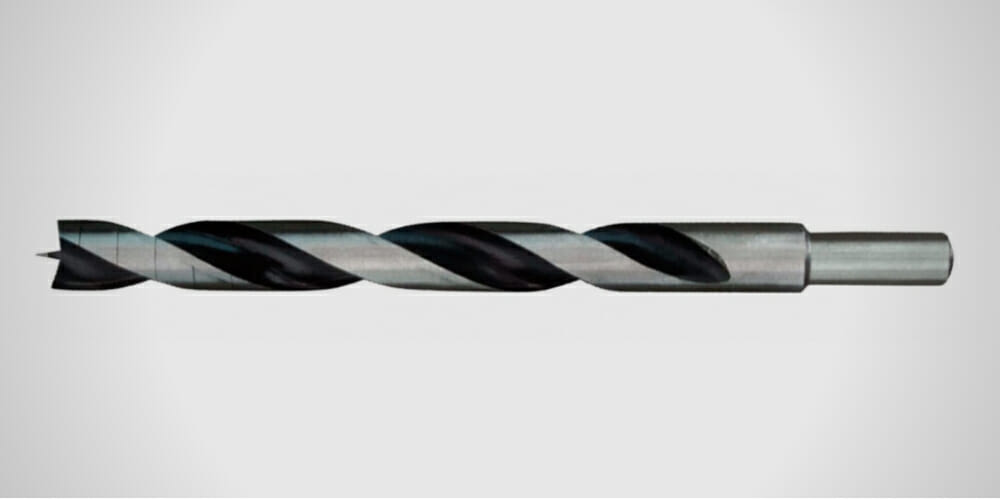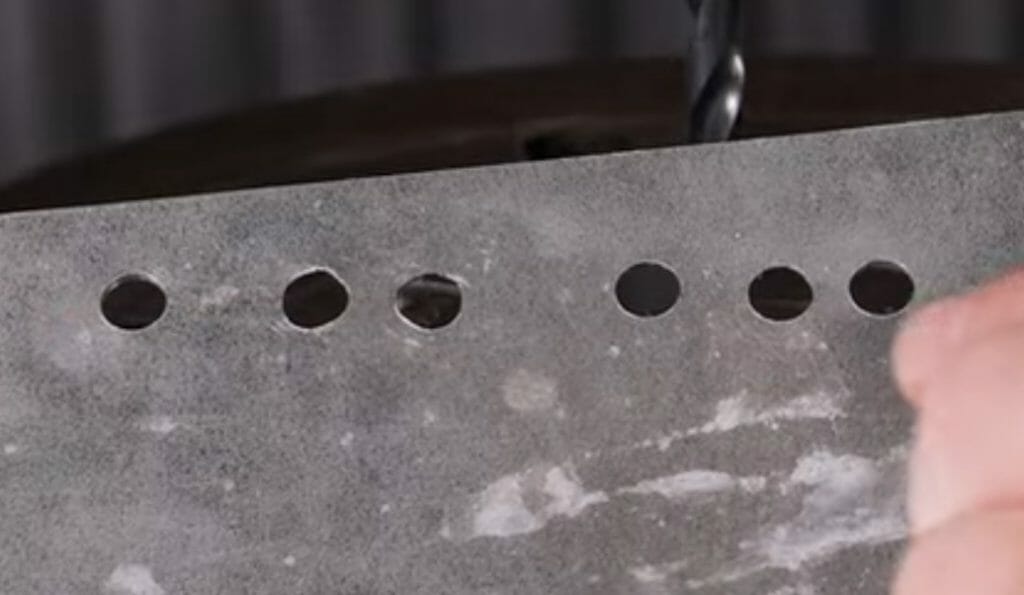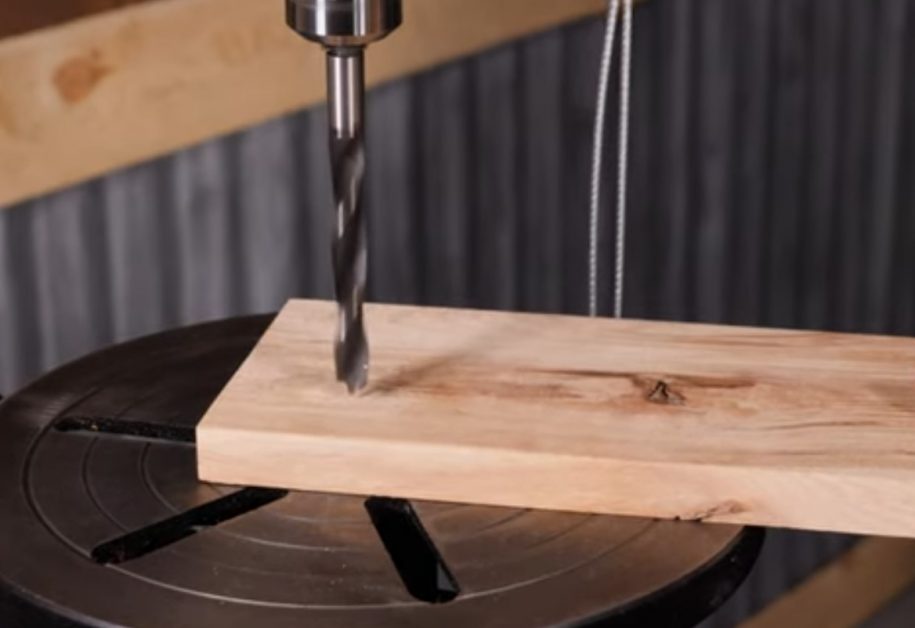What are Brad Point Drill Bits Used for?

In this article, I will explain in more detail what brad point drill bits are used for and the recommended types for which project.
In general, brad (or spur) point drill bits are used for drilling holes in softwood, hardwood, soft plastic, metal, and sometimes tougher materials depending on the type of drill bit, which can range from steel to diamond bits (the toughest).
I’ll go into more detail below.
What is a Brad Point Drill Bit?
Bits with a Sharp End
Firstly, what exactly is a brad point drill bit? A brad point drill bit is a drill bit with a very sharp end. It looks like a regular twist drill bit, but with a sharp point sticking out. That point looks like a brad nail, hence the name.
Types and Sizes of Brad Point Drill Bits
Common and Special Types
Brad point drill bits are a type of drill bit that combines the capability of a regular twist drill bit and the heavy-duty spade bit used for large hole drilling. They come in three common types to provide a range of toughness: They are made from either carbon-steel, carbide, or HSS (High-Speed Steel).
Less common are ones made from chrome vanadium, which are only a little stronger than steel and less so than HSS. The toughest ones are made from tungsten carbide and polycrystalline diamonds.
Which Brad Point Drill Bit to Use
Use this handy chart to determine which type of brad point drill bit would be most suitable for particular materials.
| Material or Surface (which you’re going to drill into) | The best brad point drill bit to use |
| Softwood | Steel bits |
| Harder softwood and soft plastic | Carbon-steel, chrome vanadium or HSS |
| Hardwood | HSS or Tungsten carbide-tipped |
| Metal | Tungsten carbide-tipped |
| The toughest of materials | Polcrystalline diamond bits |
Size Range
Brad point drill bits usually come in sizes ranging from 0.0787” (2mm) to 0.9843” (25mm). Larger-diameter ones are available for less common uses.
What is a Brad Point Drill Bit Used for?
Greater Precision
Brad point drill bits are designed for a special purpose. They are designed to help make very clear and precise holes. They ensure your holes are always straight and smooth irrespective of the surface you’re working on.

No Wandering
It’s their sharp ends that provide this greater accuracy.
The point helps to keep them in place once they’re positioned. It prevents them from ‘wandering’ like twist drill bits are prone to do (unless using a center punch first). This makes them very versatile and powerful. If you need to avoid drill bit wandering and you don’t have a center punch on hand, use a brad point drill bit instead.
Working to Perfection
If you’re a DIY expert, having a brad point drill bit in your toolbox will guarantee your work is always professional. Unlike the multi-purpose drill bits, they are specially dedicated to woodworking in particular. If you want all your holes to look perfect and everything to fit snugly, definitely use them.
What They are Used to Make
These features make brad point drill points especially useful whenever you need clear and accurate holes. They are used, for example, in doweling, making bookshelves, commercial cabinetry, and other furniture construction.
Brad point drill bits are also used in drill presses. In fact, using them in a drill press makes them more efficient because you can then clamp the material and drill more easily. For precise angled drilling, attach them to a jig with bushings.
What Surfaces Can a Brad Point Drill Bit be Used on?
Ideal for Wood
Brad point drill bits can be used on a variety of surfaces or materials, including softwood and hardwood.
They are ideal when you need to drill precise and clean holes in any type of wood. If an ordinary drill bit fails to penetrate a particular hardwood, a brad point drill bit will likely work for you.
The carbon-steel type (black colored) works best for softwood and the HSS type for hardwood.

In fact, brad point drill bits can be used on a wide variety of materials. Although ideal for wood, they work equally well on soft plastic and thin sheet metal too.
Do Brad Point Drill Bits Work Well on Thick Metal?
Unfortunately, brad point drill bits do not work so well on thick metal sheets. The reason for this is that their sharp points may find it difficult to penetrate hard materials. A normal multi-purpose twist drill bit can work better on hard metal as long as it is made of high-carbon steel, carbide, or HSS.
Drilling with a Brad Point Drill Bit
Step 1: Center Punch
First, punch at the spot you want to drill into using a center punch.
Step 2: Drill a Pilot Hole
This is optional, but necessary if you want to drill a large hole.
Can a Brad Point Drill Bit be Sharpened?
Sharpening Can Be Very Difficult
Although brad point drill bits are already very sharp by design and they last long, if they do ever become blunt and need resharpening, it is very difficult to do that. It requires customizing your grinding wheel, and using taper saw files, rotary cutting tools, flat Swiss files, and diamond cards (especially for the carbide-tipped ones). You might just need an expert tool sharpener to sharpen your brad point drill bit!
Keeping Your Brad Point Drill Bits Sharp
Maintaining the sharpness of a brad point drill bit is essential. If it is sharpened unevenly, it can get in the way when drilling into something and even cause damage to it. If not that, a blunt brad point drill bit can cause the hole to be larger than you wanted.
If you’re worried about this problem, and you can afford the higher cost, it’s best to work with carbide-tipped brad point drill bits because they are more guaranteed to last long. Still, brad point drill bits are definitely worth having if you are serious about your work or you are a carpenter by profession.
Sharpening a Brad Point Drill Bit
Whether you are going to sharpen the dull brad point drill bit yourself or you are just curious to know how it would be done, here are the steps:
Step 1: First, Sharpen the Spurs
Begin with sharpening the spurs prior to sharpening their point. Only a few strokes may be necessary if you work at a suitable angle. If using a grinder, the same applies.
Step 2: Sharpen its Point
Having sharpened the spurs, now sharpen the point. Focus more on its edges. Set each side to an angle of around 5° to 10° at most, and use the same number of passes on each side. Keep the bit as rigidly centered as possible to avoid uneven sharpening. Rotation on a drill press could make this task easier.
More Advantages of Brad Point Drill Bits
Stronger and More Durable
Compared to other types of drill bits, brad point drill bits are not only sharper, but also stronger and have a longer shelf life. They can stay sharp for a long time, which makes them more durable. These features alone should make them an essential inclusion in a carpenter’s toolbox.
Reduced Chances of Splintering
Besides ensuring accuracy, i.e. making it easier to drill on the exact mark compared to ordinary drill bits, brad point drill bits also reduce the chances of the wood splintering when drilling. This is due to its spur design. Splintering often happens when you start drilling. The chances of tearing are also minimized, which happens when the drill bit passes right through the wood. (1)
Some Disadvantages
Brad point drill bits are not without some disadvantages. They are more expensive than the cheaper and less reliable ordinary drill bits. Although cheaper brad point drill bits can be bought, they will not work as well as proper brad point drill bits and are likely to suffer from ‘wobbling’.
Also, brad point drill bits are unsuitable for enlarging holes you have already made. They are only good for making clean new ones. This is because its cutting edge might not sit properly inside the hole. If this happens, it will easily move about whilst drilling. If you have to enlarge an existing hole, use a regular twist drill bit.
What Brad Point Drill Bits are Good and Not So Good At
This table summarises all the advantages and disadvantages of brad point drill bits mentioned in this article.
| Brad Point Drill Bits | |
| Are Good For… | Are Not So Good For… |
| Working to precision (accurate alignment) Making straight and clear holes working professionally on wood Working with any soft material, such as wood, plastic, or thin sheet metal Minimising the chances of wood splintering and tearing out Keeping strong and durable drill bits. (2) | Your pocket (more expensive) Enlarging existing holes Working with thick metal sheets (unless using the toughest types) Sharpening easily. |
Take a look at some of our related articles below.
- How to sharpen drill bits with a file
- What size drill bit for 8-screw metal
- What size drill bit for 3/16 tapcon
References
(1) ensuring accuracy – https://www.statcan.gc.ca/en/wtc/data-literacy/catalogue/892000062020008
(2) precision – https://study.com/learn/lesson/accuracy-precision.html
Video Reference
